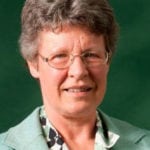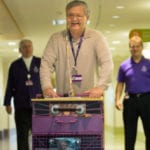 Food
Food  Food
Food  Facts
Facts 10 Interesting and Bizarre Facts About Vending Machines
 Technology
Technology 10 Ancient “Smart” Materials Scientists Still Can’t Reproduce
 Gaming
Gaming 10 Games Milked for All Their Worth
 Our World
Our World 10 Things That Will Make You Rethink Everything Normal
 Animals
Animals 10 Times the Christian Church Took on the Animal Kingdom
 Weird Stuff
Weird Stuff 10 Big Ideas Born in British Pubs
 Travel
Travel 10 Perilous Hikes Still Open to the Public Today
 Facts
Facts 10 Terrifying Facts You Never Wanted to Know
 Weird Stuff
Weird Stuff 10 Fascinatingly Gross Secrets About Your Body
 Food
Food 10 Most Outrageous Restaurant Food Challenges
 Facts
Facts 10 Interesting and Bizarre Facts About Vending Machines
 Technology
Technology 10 Ancient “Smart” Materials Scientists Still Can’t Reproduce
Who's Behind Listverse?

Jamie Frater
Head Editor
Jamie founded Listverse due to an insatiable desire to share fascinating, obscure, and bizarre facts. He has been a guest speaker on numerous national radio and television stations and is a five time published author.
More About Us Gaming
Gaming 10 Games Milked for All Their Worth
 Our World
Our World 10 Things That Will Make You Rethink Everything Normal
 Animals
Animals 10 Times the Christian Church Took on the Animal Kingdom
 Weird Stuff
Weird Stuff 10 Big Ideas Born in British Pubs
 Travel
Travel 10 Perilous Hikes Still Open to the Public Today
 Facts
Facts 10 Terrifying Facts You Never Wanted to Know
 Weird Stuff
Weird Stuff 10 Fascinatingly Gross Secrets About Your Body
10 Uplifting Stories To Get You Through The Week (3/10/19)
If the week has got you down, this list might help lift your spirits. We looked at all the positive, inspiring, and amusing stories that made the headlines over the last few days and put them all into one list. It goes well with a side of quirkiness from our offbeat stories list.
This week comes with a varied panoply of positive tales. There’s a lonely dog that finds a home, two teachers who encourage reading in their own ways, and four teens who help out a sickly neighbor. There is good news from Chichen Itza and a promising development regarding HIV. Two conjoined twins return home, while astronauts prepare for the first all-female spacewalk.
10 A Home For Hector
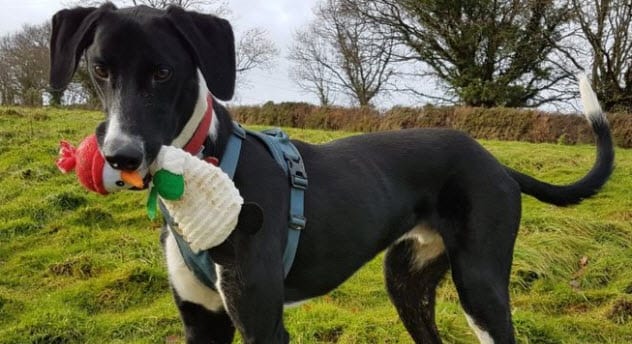
A two-year-old pooch which was once billed as “Britain’s loneliest dog” has finally found a home.
Hector the lurcher was rescued by the RSPCA back in 2017 over welfare concerns. He went to the Little Valley Animal Shelter in Exeter. That is where he spent the next 500+ days of his life. In the process, Hector became the shelter’s longest-staying resident and also earned the reputation of being the loneliest dog in the country.
This February, staff at the shelter decided to become more proactive to find a home for Hector. They launched a social media campaign. It soon went viral, and hundreds of offers came in from people willing to take in the lovable dog.
Then came the process of going through candidates and finding the right person. The shelter believed that Hector would best benefit from a household with no kids, no other pets, and an owner who can give him plenty of attention.
As it turns out, there was at least one such candidate. Although the shelter did not reveal that person’s identity, it did confirm that Hector now has a “forever home.”[1]
9 Reading The Fine Print
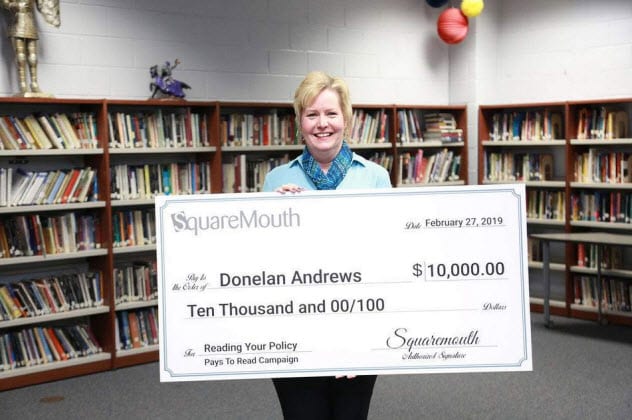
A 59-year-old teacher earned a nice $10,000 retirement bonus and a few charitable donations all because she read the terms and conditions of her insurance policy.
Donelan Andrews bought a $400 Tin Leg travel policy from Squaremouth, an insurance company based in St. Petersburg, Florida. Andrews describes herself as an “unapologetic nerd,” and she is in the habit of doing something that we all say we do but really don’t. She reads the terms of service of all agreements. Therefore, she printed out her policy and started reviewing it.
On page seven, she noticed something curious. Sandwiched between legal mumbo jumbo was a small section titled “Pays to Read.” It detailed a contest meant to highlight the importance of reading the documents we sign. It also provided instructions on how to claim a grand prize of $10,000. Donelan quickly emailed the company. The next day, she was contacted by a Squaremouth employee who confirmed that she had won the money.[2]
The company intended to run the contest for a whole year. They didn’t actually expect anyone to win it and were planning to give the money to charity at the end. The contest only lasted for 23 hours.
Even so, 73 other people bought the same kind of policy and could have claimed the prize before Andrews, but none of them read the terms and conditions. To celebrate the teacher’s dedication, Squaremouth also donated $5,000 to each of the two schools where she works and another $10,000 to children’s literacy charity Reading Is Fundamental.
8 Culinary Calamity Creates Cornbread Comeback
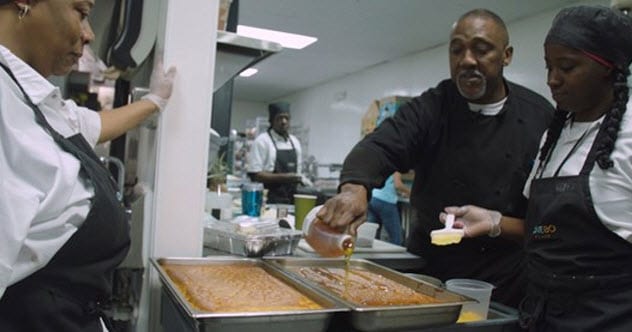
Two years ago at the Charleston Wine + Food festival, Stefan DeArmon was a homeless veteran looking for a job with one of the restaurants. At this year’s edition, he is one of the headlining teachers with his own cornbread company.
When DeArmon retired from the US Coast Guard, he wanted to return to his hometown of Charleston, South Carolina, to help out his elderly parents. However, he didn’t have a lot of money so he was placed in a homeless shelter called One80 Place. DeArmon took advantage of the shelter’s recent partnership with the Charleston Wine + Food festival and found work with a barbecue restaurant called Smoke.
DeArmon started as a dishwasher and worked his way up to food preparation. His black chef coat and white undershirt earned him the nickname “Reverend.” One day, he was making a batch of cornbread when he mistakenly poured heavy cream in the batter instead of buttermilk. He feared he might get fired, but his boss, Roland Feldman, told him to bake it anyway.[3]
The result was a delicious accident which prompted Feldman to start a new business called the Reverend Cornbread Company with DeArmon as his partner.
At the 2019 Charleston Wine + Food festival which took place this week, Reverend taught a baking class. He also makes sure to give back by schooling students at the One80 culinary program and by having his food truck deliver meals to the shelter multiple times a month.
7 Two People Become HIV-Free
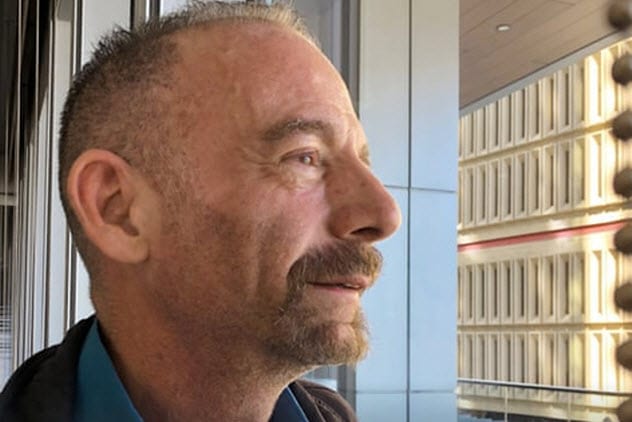
A man in London became the second person in the world to be free of HIV following a bone marrow stem cell transplant.
Over 10 years ago, Timothy Brown became the first person to get rid of the virus. In both patients, the “cure” for HIV was incidental. Like Brown, the unidentified London man received a stem cell transplant to treat a form of immune cell cancer. As it happened, both their donors had a rare genetic mutation of the CCR5 gene. This made them HIV-resistant, and even when Brown stopped taking his antiretroviral drugs, he was still able to suppress the virus.[4]
The same thing happened to the London patient who has been HIV-free for 18 months without medication. Unfortunately, the technique is not viable as a large-scale cure. Even so, Anton Pozniak, president of the International AIDS Society, sees it as critical proof of concept that shows that HIV is curable.
Just a few days after the initial announcement, there was mention of a third cured person at a conference in Seattle. The “Dusseldorf patient” has shown no signs of HIV following three months off antiviral drugs.
6 New Treasure Trove At Chichen Itza
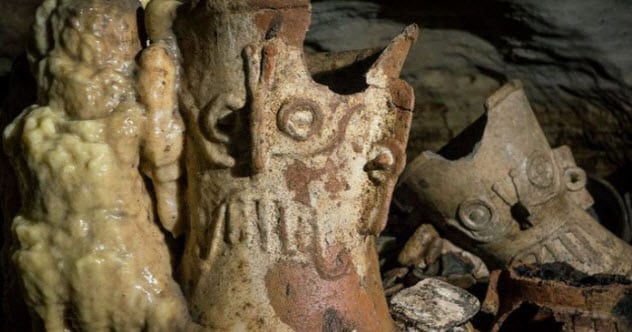
Despite being one of the most famous pre-Columbian archaeological sites in North America, Chichen Itza still has secrets. Researchers recently found an untouched cave full of hundreds of Mayan artifacts.
The cave is located about 2.7 kilometers (1.7 mi) east of the famed El Castillo step pyramid. Local farmers actually first found it back in 1966. They told archaeologist Victor Segovia Pinto. He had the cave sealed and wrote a report about it which was promptly forgotten.
It wasn’t until recently that locals reminded scientists once more about the cave and the treasure trove that rests inside. This time, researchers investigated the site with a bit more aplomb.
The cave contains seven chambers full of small artifacts which the Maya left as offerings to Tlaloc, the god of rain. They include ceramic incense burners, bones, and clay vessels. The archaeological team plans to inspect and leave the artifacts in situ out of respect for local customs.[5]
Team leader Guillermo de Anda is actually happy that Pinto decided to seal off the cave decades ago without removing any items. This way, de Anda believes that researchers will be able to learn more about the cultural exchanges that took place between the Maya and other civilizations.
5 Tucked-In Tuesdays
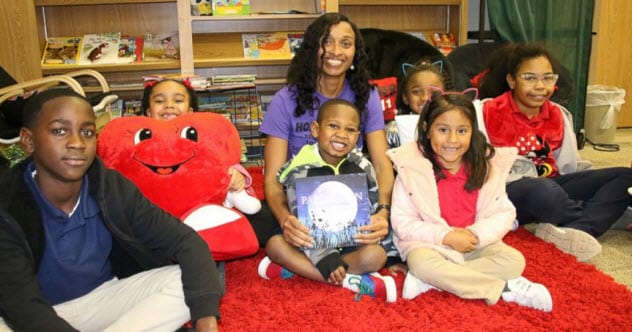
An elementary school principal is being praised for starting “Tucked-In Tuesdays” where she reads bedtime stories to her students over Facebook Live.
Dr. Belinda George is still in her first year as principal of Homer Drive Elementary in Beaumont, Texas. Over the Christmas break, she realized she was going to miss her students (whom she calls “scholars”). So she looked for a way to reach out to them even when school is out.
That is where “Tucked-In Tuesdays” came in. Every Tuesday night at 7:30 PM, the principal reads bedtime stories from her living room which anyone can listen to using Facebook. She believes it is important to love and nurture children if you want them to trust you. She sees this as an extra step which can help her build stronger relationships with her students and their families.[6]
As far as the parents are concerned, they love that George spends time with the children outside of regular hours. Already, the school has seen improvements in its literacy and reading comprehension scores, which many have attributed to “Tucked-In Tuesdays.”
4 Good Neighbors

Four teens met up at 4:30 AM to shovel a neighbor’s driveway so she could go to her dialysis treatment.
The township of Parsippany-Troy Hills in Morris County, New Jersey, has been hit by snowstorms over the last few days. This is a serious problem for Natalie Blair who relies on dialysis treatments because her kidneys are failing.
Fortunately for her, the Lanigans are good neighbors. Normally, Brian Lanigan shoveled her driveway so that Natalie could leave her home. However, when the community was hit by over 20 centimeters (8 in) of snow, Brian was at his job as an EMT.
That is when little brother Patrick stepped in. He called his friends and had a sleepover so they would be ready to shovel her driveway early in the morning. The four of them worked together and cleared the snow in less than 30 minutes. The rest of the world found out about their kindness when proud father Peter Lanigan tweeted a picture of his son whom he described as a “small kid with a big heart.”[7]
3 Happy Ending For Conjoined Twins
Two conjoined twins from Bhutan arrived back home this week after traveling to Australia to be surgically separated.
Nima and Dawa Pelden were born in 2017 attached at the stomach. They were always facing each other and unable to move independently. The girls and their mother, Bhumchu, were flown to Melbourne in October 2018 after a charity called the Children First Foundation raised the $180,000 necessary to cover the costs of their medical treatment.
A team of 25 doctors, nurses, and anesthetists operated for six hours and managed to successfully separate Nima and Dawa. They were kept under observation during the following months and were finally able to go back home to Bhutan this week.
According to staff at the Melbourne Royal Children’s Hospital, the girls might be separated but they still like being close to each other. Nurses tried to keep them apart, but the sisters would shuffle toward each other and intertwine their legs.[8]
2 A Historic Spacewalk

March 1 kicked off Women’s History Month. The celebration will end with a notable first as two NASA astronauts will perform the inaugural all-female spacewalk on the International Space Station.
Anne McClain and Christina Koch are scheduled for a spacewalk on March 29. They will be assisted by Lead Flight Director Mary Lawrence and Lead EVA Flight Controller Jackie Kagey who will be providing ground support from NASA’s Mission Control at the Johnson Space Center in Houston. It is estimated that the spacewalk will last around seven hours, although NASA has not disclosed what tasks the astronauts will perform.[9]
The event is the result of serendipitous timing rather than any kind of purposeful planning. It will be the second of three spacewalks planned as part of Expedition 59. McClain has been aboard the ISS since December 2018 and will have her first spacewalk on March 22 alongside astronaut Nick Hague. Koch is due to arrive on the ISS on March 14, marking her first trip into space.
1 Sisters Safe And Sound
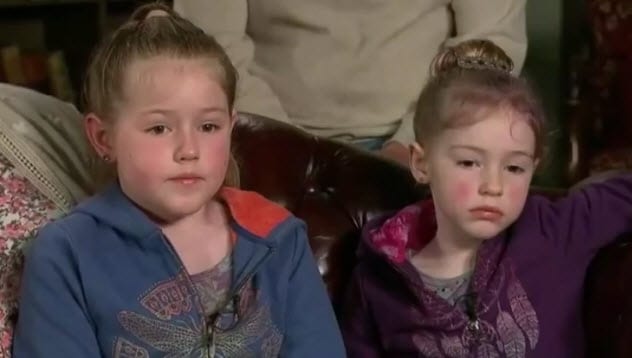
The story of two young sisters lost in the California woods had a happy ending. After almost two days in the forest, eight-year-old Leia Carrico and her five-year-old sister, Caroline, were found safe by search-and-rescue teams.
Last Friday afternoon, the sisters went for a walk near their rural home in Garberville, Humboldt County. Even though they spend a lot of time outdoors, they became lost in the woods with no food or water. A search team with the Piercy Volunteer Fire Department found them on Sunday about 2.3 kilometers (1.4 mi) away from home. The girls were hungry and cold but uninjured and in fairly good spirits.[10]
In a later interview, mother Misty Carrico partly credited their survival to the wilderness training they received as part of the 4-H program. The girls were able to find shelter under a fallen branch and drank water from huckleberry leaves. They stayed in the same place knowing that this would increase the chances of them being found.
Read more uplifting stories you might have missed from March 3, 2019, and February 24, 2019.
